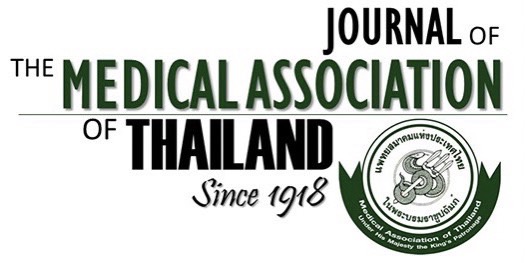SW2-Year Outcomes of Subthalamic Deep Brain Stimulation for Idiopathic Parkinson’s Disease†
Sarun Nunta-aree MD, PhD*, Bunpot Sitthinamsuwan MD, MSc*, Kanokwan Boonyapisit MD**, Apichart Pisarnpong MD**
Affiliation : † Presented in The Neurosurgical Association of Thailand update course: Do’s & Dont’s in neurosurgery. Bangkok, Thailand: 6-8 May 2008 * Division of Neurosurgery, Department of Surgery, Faculty of Medicine Siriraj Hospital, Mahidol University, Bangkok, Thailand ** Movement Disorder Clinic, Division of Neurology, Department of Medicine, Faculty of Medicine Siriraj Hospital, Mahidol University, Bangkok, Thailand
Background : Deep brain stimulation of the subthalamic nucleus (STN-DBS) is the recent surgical treatment of choice for
patients with idiopathic Parkinson’s disease (PD) complicated by motor fluctuation and disabling dyskinesia.
Objective : To study 2 years clinical outcomes, changes of medication and complications following STN-DBS in patients with
advanced PD.
Material and Method: Twenty-seven patients with 2-year follow-up and complete data were enrolled for retrospective
evaluation of Unified Parkinson’s Disease Rating Scale (UPDRS) and levodopa equivalent dose (LED). Postoperative
UPDRS at 6-month, 1-year and 2-years were compared with the preoperative corresponding UPDRS. Postoperative LED at
2 years was compared with the preoperative baseline. Statistical analysis was performed with paired t-test. Additionally, 62
patients with STN-DBS were enrolled for evaluation of treatment complications.
Results : Of 27 patients with complete 2-years follow-up, preoperative dopamine challenge test showed 50.6% improvement
of motor score (UPDRS axis III). Mentation, behavior and mood (UPDRS axis I) were not significantly improved in each
subscore, but significantly improved in the total score. Marked improvement of activities of daily living (UPDRS axis II) and
complications of therapy (UPDRS IV) was found. Two-year postoperative motor score (UPDRS axis III) during “off
medication-on stimulator” showed progressive and dramatic improvement by mean of 59.83%. The present study also
revealed significant improvement of motor score (UPDRS axis III) during “on medication-on stimulator” in some items. A
significant 33.4% reduction of LED was noted. Of 62 patients with bilateral STN-DBS, there was 1 asymptomatic intracerebral
hemorrhage (0.8% per side), 2 speech difficulty (3.2%), 1 transient confusion (1.6%), 2 transient hypomania (3.2%),
1 stimulation induced hemiballism (1.6%), 1 wound infection (1.6%) and 1 lead malposition (0.8% per side).
Conclusion STN-DBS is a safe and effective treatment for PD complicated by motor fluctuation or dyskinesia. The operative
outcomes show long-term improvement of activities of daily living, motor function and reduction of medication and drug-
related complications.
Keywords : Parkinson’s disease, Subthalamic nucleus, Deep brain stimulation



